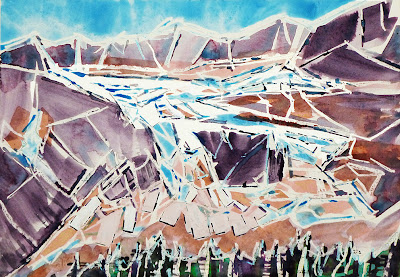 |
| (click on image to enlarge) |
Carthage
overlaid with Phoenician alphabet
Photograph and Photoshop®
©2009 Charlene Brown
This computer painting combines
photographs of the Punic ruins at Carthage and a
bas relief of the Phoenician alphabet on a stone plaque at the Bardo museum in Tunis.
The alphabet has
been described as civilization’s first abstract art. The Greeks added vowels to
it and created a visual communications breakthrough in the same remarkable ‘Classic
Period’ that they solidified the spatial concepts of Euclidean geometry. And they named the ‘Seven
Wonders of the World’ – works of art as much as science – and
almost all of them Greek, while they were at it!









